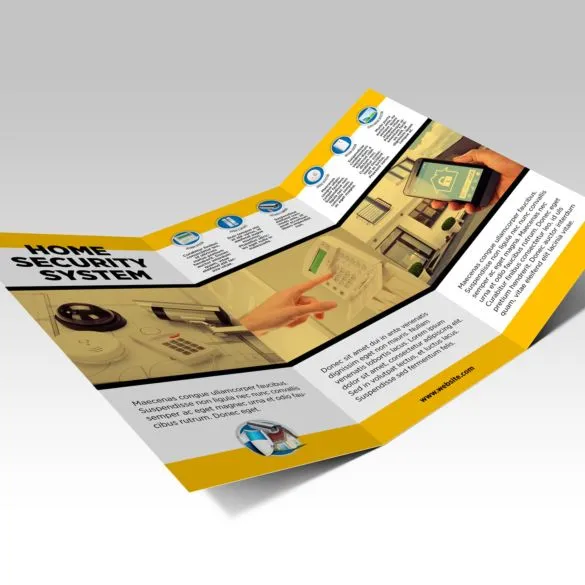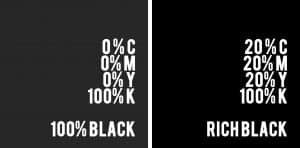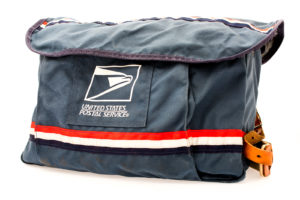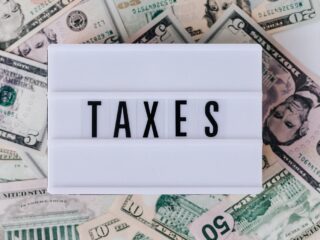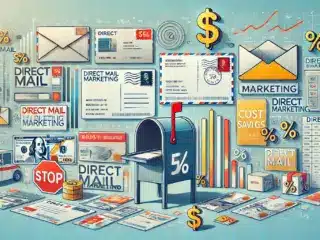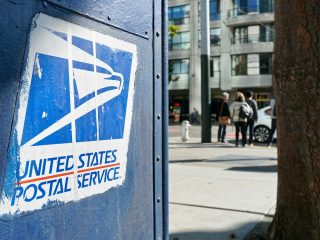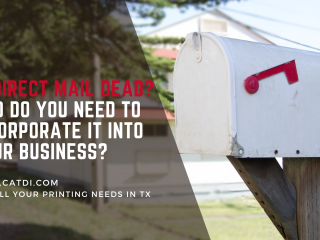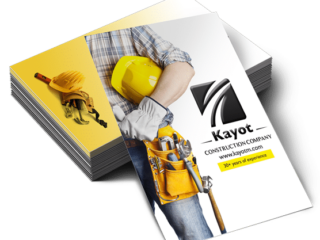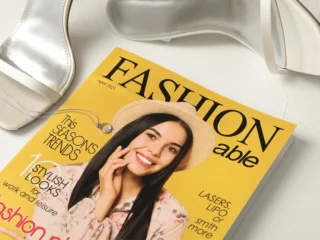Last Updated on July 27, 2024 by Carlos Alonso
A customized brochure is a printed marketing piece that is designed to promote a business, product, or service. It typically consists of a number of panels of information that are formatted and laid out in a way to best showcase and explain the details. Customized brochures can be used to provide customers with comprehensive information about a business and its offerings, such as a list of services or products, a description of the business, and images of the offerings. They are also used to engage, inform, and excite potential customers and can be printed in a variety of sizes, paper stocks, and fold styles. Custom brochures can be customized to include personalization, logos, and custom text to fit a company’s branding needs.
A well-designed, eye-catching brochure can help you promote your business, products, or services in a way that is both professional and affordable. However, before you print your brochures, there are a few things you should consider. Here are the top 10:
What to consider when printing brochures
1. The purpose of the brochure
The purpose of the brochure will determine the best type of brochure fold to use. The brochure style should complement the information and inform all design choices and graphic design
. The following are examples of ways you can use brochures in your business; great brochures will combine a few of the below:
- Tell the story of your company. Include the origins of your business and remind customers of your value. Showing the personal side of your business can make customers feel welcome.
- Explain a popular service. Use specific examples to show how a particular service can be useful to your customers. For example, the long-term benefits of a cleaning product.
- Illustrate how your product works. Give more room for a product demonstration by adding more panels to highlight details and each step.
- Detail an upcoming event. Include the schedule and other vital information about an upcoming event. Brochures have enough panels to make sure all the details are included.
- Include a call to action. The most important part of print marketing is to include a call to action that prompts your customer to do something. Use striking, bold art work and add special effects like foil stamping, embossing and special coatings.
2. Design and layout
When it comes to designing and laying out printed brochures, there are several considerations to keep in mind. An important factor is choosing the right folding option for the brochure. The most common is the tri-fold brochure, but there are other options detailed at the end of the article. It is also important to choose the right font for the brochure. Easy-to-read fonts like Garamond, Helvetica, Times New Roman, or Century should be used, and the font size should be proportionate to the size of the brochure. Sans serif fonts such as Arial can be used for captions or small type. Bold, italic and bigger font sizes should be used to highlight important information instead of varying font styles.
When it comes to the layout of the brochure, it is important to maximize space and create an aesthetically pleasing design. Use the panel number to organize information on your brochure. The first panel serves as your cover and should include your company name and logo. The inner panels should discuss your business using visuals and engaging copy. Place all your contact information on the outermost back panel. Use graphics and images to emphasize key points, keeping the design elements to a minimum, and asking a friend for their opinion on the font legibility and overall design before printing. Finally, it is important to include a call to action that prompts customers to take action. Depending on the purpose of the brochure, certain design elements such as bold artwork, highlighting techniques, and special coatings can be used to create an eye-catching and memorable design.
However, the graphic design of a brochure can be more tricky than a flat marketing piece. Your graphic designer needs to ensure your text and graphics are lined up correctly to work with the fold-style you have chosen. This is a very important step in having a professional brochure. If you do not have a graphic designer, Catdi Printing has you covered and can design the custom brochure.
3. Size and format
When printing brochures, the size and format should be taken into account. Common standard sizes used by businesses range from 5.5″ x 8.5″ to 8.5″ x 11″ before folding. These sizes are typically used for promotional material, such as services, medical facts, real estate, trade fairs, and non-profit organizations. Often this size will fit in a card rack. On the other hand, larger sizes such as 11″ x 17″ and 17″ x 22″ are more suitable for brochures with more detailed content. Examples of these larger sizes include amusement/theme park brochures and maps. Catdi Printing offers a huge variety of sizes to cover all brochure needs.
The content you plan to include in your brochure also affects the size best suited for your business. You can use a combination of flat paper size, fold, and orientation (horizontal or vertical) to create your brochure size. Additionally, keep in mind the finished folded size of the brochure, which should be enough room to include the images and copy you wish to include. Finally, blank brochure templates can be downloaded from the internet in order to help you create your layout.
4. Paper options
When it comes to printing brochures, there are a variety of paper options available with Catdi Printing. These include:
- 60lb Opaque
- 70lb Premium Opaque
- 80lb Gloss Book
- 80lb Gloss Cover
- 80lb Matte Book
- 100lb Matte Book
- 100lb Gloss Book
- 100lb Gloss Cover
70 lb. paper is twice as thick as common copy paper and is lightweight but durable; 80 lb. paper, which is slightly thicker than 70 lb. paper stock and has a thickness comparable to magazine paper and is writable using ballpoint pens or permanent markers; and 100 lb. Paper, which has a thickness comparable to postcards and is great for designs requiring a bit more weight.
5. Features and options
When it comes to printing brochures, there are a variety of features and options available. These include double-sided printing, a large variety of sizes, full-color printing, multiple folding options (detailed below.), and an assortment of papers. Brochures are typically printed in full-color on both sides (4/4), however brochures can also be printed with full color on one side and black only on the other side (4/1).
6. Coating and finishing
Catdi Printing offers 4 coating options on brochures. These are:
- Aqueous Coating (AQ)- It is used to enhance the printed piece. AQ is applied to all 100lb gloss book and 100lb gloss cover.
- No coating
- Satin AQ- It is a water-based aqueous coating that helps seal and protect the printed product and provides a luxurious, satin finish.
- UV Coating- A liquid coating which is then bonded and cured with ultraviolet light. This coating is used to provide a protective coating to the printed piece. Please note that you CAN NOT write or imprint on UV coated jobs.
Catdi Printing offers perforation and can drill holes in the brochures as well. Perforations are often used to have a coupon that is easily separated from the brochure for use. Additionally, direct mail services are offered and variable data printing, should you be looking to mail your brochure as part of a marketing campaign.
7. Quality of the print
When evaluating the quality of a brochure print, there are several factors to consider, such as the paper stock, the print quality, the folding options, the color printing, and the overall design. With Catdi Printing, the possibilities are nearly endless. However; most commonly our brochures are printed on Premium 100# Gloss Book stock, which offers a high quality finish and a vibrant color. Additionally, we offer multiple folding options, including tri-fold, z-fold, half fold, accordion fold, and gate fold, so you can find the right fold for your brochure. Orders under 500 brochures will be printed digitally, while orders of 500 or more will be printed using offset printers. We also offer variable data printing so you can personalize each brochure and make sure your marketing materials stand out.
Finally, you should make sure that your brochure design is unique, professional, and eye-catching, so that it reflects well on your business. At Catdi Printing, we have in-house designers that can assist with design if needed.
8. Price
When considering the price of printing brochures, it is important to take into account the number of pieces ordered, the paper stock, the size of the brochures, and additional options such as heavy paper scored for folding. Generally, the larger the total number of brochures ordered, the cheaper the price per piece. For example, if you order 5,000 brochures, the price per piece can be less than 10¢ each. Brochures are available in different sizes, with the most common being 8.5″ x 11″ and 11″ x 17″. Bulk discounts are available for larger orders, making it more affordable to purchase a large quantity of brochures. By considering all of these factors, you can choose the best option to fit your budget.
9. Turnaround time
The turnaround time for brochure printing depends on the quantity and customization being printed. The standard production averages at 3 days (shipping time not included). There are rush options for a fee.
Creating high-quality brochures are a great way to promote your business. In this guide, we have discussed the top considerations for printing custom brochures for your business and many of the specifics Catdi Printing has to offer you when you are ready for high-quality, professional business materials. Below the most popular brochure folds are detailed to provide additional insight into the brochure design process.
What are the different types of brochure folds?
Trying to decide what type of fold will work best for your brochure can be tough. There are many factors to consider, as detailed in the text above. With so many different types of folds available, it can be hard to know which one is right for your brochure. But don’t worry – we’re here to help! In the following, we’ll take a look at the most popular types of brochure folds and what makes them unique. By the end, you’ll know exactly which fold is right for your next project.
1. Tri-Fold
A tri-fold brochure is a type of brochure that is folded twice into three panels. The trifold brochure allows for a specific sequence of information to be presented, allowing the customer to take in information in a structured way. This makes it an ideal brochure for businesses promoting product details with images, graphics, and text, like real estate, restaurants, spas, and other service-oriented businesses. It also provides a great opportunity to divide services, products, and call to action into separate sections.
The tri-fold also has some advantages over other fold types. It is more compact than the z-fold, and can fit more information than the half-fold or bifold. It is also better suited to presenting detailed information than the gate fold, which is better suited to a “big reveal” or presentation that focuses on design.
Characteristics of a tri-fold brochure include:
- Short and visual
- Three equal panels
- Ability to fit a lot of information
- Most popular type of folding option
- Commonly used for product details with images, graphics, and text
- Easy to divide up services, products, and call to action into consecutive sections
- Compact and fits into most rack card slots
- Front panels can reveal an image or infographic to unveil a new offer from your business.
2. Half Fold
A half-fold or bi-fold brochure is a type of brochure composed of one sheet of paper folded in half to create a front panel, two inside panels, and a back panel. This style of brochure is best for simple business presentations, such as introducing one or two products or services, and provides enough room for text and/or images. This type of fold is popularly used by retail stores, hospitals, and hotels, and is most commonly used for product handouts, newsletters, and small maps or guides.
3. Z-Fold
A z-fold brochure is a type of brochure that is folded into a distinctive “Z” shape, dividing the brochure into three vertical panels. It is a great way to present a lot of information in a compact and efficient format. The panels allow for easy division of services, products, and call to actions and can even be used for multiple language translations.
4. Accordion Fold
An accordion fold is a type of brochure fold that divides the brochure into four panels that fold on top of one another. This allows the presentation of information in an organized and sequential manner, while also being simpler to design compared to other types of brochures. Accordion fold brochures can be used to present event schedules and maps, and can be a great way to organize and present information for customers. Other features of an accordion fold include that it is like the z-fold, but with four panels, it can be printed on larger paper sizes, and it allows for extra space for the design.
5. Gate Fold
A gate fold is a brochure fold type that consists of two panels that open up like a gate or a pair of doors. The two panels are of equal size and when unfolded, the four panels can be used to expound on several product lines. This type of fold is popularly used by retail stores, hospitals, and hotels, and works well for museums, travel, and other services that employ images for their promotions.
When creating a gate fold, two panels of equal size are folded inwards and meet at the center, forming two even sections. This creates four panels in total, with two outer panels and two inner panels. The two outer panels are slightly shorter than the inner panels, allowing for content to be displayed across the entire page.
Each of these fold types has its advantages and can be used to achieve different looks and feels for a variety of marketing needs. Although not as popular, Catdi Printing also offers the roll fold, double parallel fold, french fold, double gate fold, as well as combining a half fold and tri-fold.
When printing brochures, it is important to consider a few elements for successful marketing. First, choose a fold that complements your brand and design. There are nine different folding formats offered. Additionally, select a quality paper stock, coating, and color options that best fit your brand. Online brochure printing, brochure marketing mailings, brochure maker tools, and associations and nonprofit brochures are all options that should be considered. Finally, if ordering in bulk, take advantage of free shipping and/or variable data printing. This allows for personalizing each brochure and can help to engage your target audience.
As you can see, there are a lot of factors to consider when printing brochures. But don’t worry – the experts at Catdi Printing are here to help you every step of the way. We offer a wide range of printing services, from digital to offset printing, and we can help you choose the right paper, coating, and design for your needs. Contact us today to get started!

